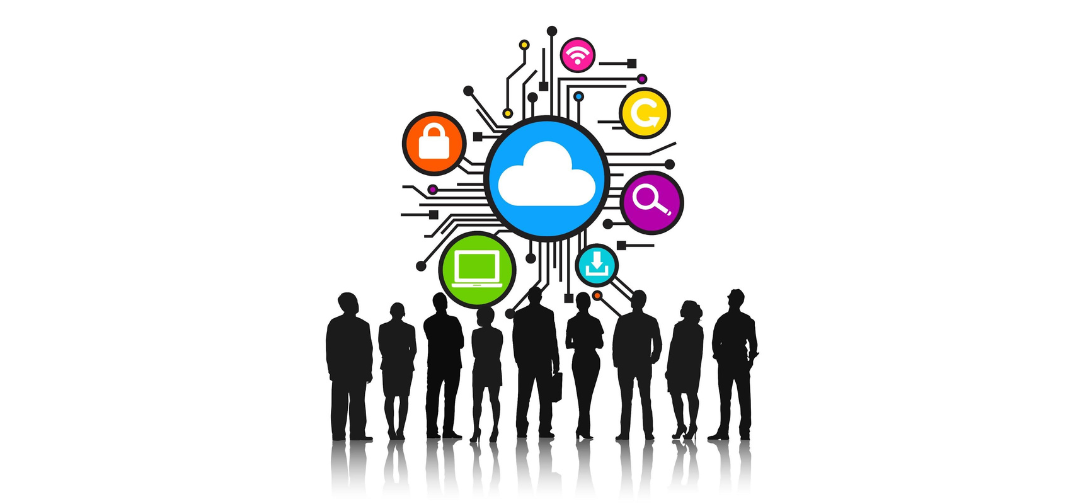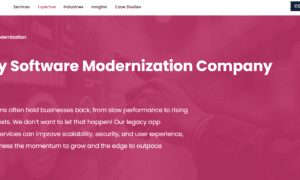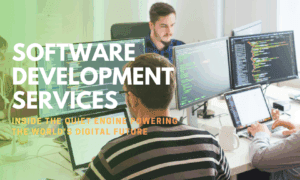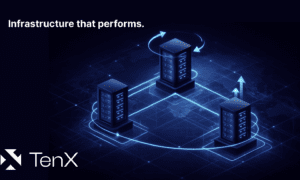Digital transformation is the modern-day business survival guide. It is a complete rewiring of a business. According to McKinsey’s book Rewired: A McKinsey Guide to Outcompeting in the Age of Digital, successful transformation requires a deep shift in mindset, strategy, and execution.
Yet, most CTOs are stuck in a paradox: the technologies they first evangelised are the very same that are stifling innovation today. Legacy infrastructure burden is a slow-burning haemorrhage of agility, security, and competitive advantage.
Legacy systems leave organizations in a complacent condition. They pull an extra 20-40% more in IT operating costs, expose a cybersecurity threat, and introduce inefficiencies that get exploited by rivals. Take the U.S. Internal Revenue Service (IRS), which is still running the 1960s COBOL-based systems. When the pandemic struck, its age-old systems groaned beneath the surge of demand, halting vital stimulus payments. If a system as vital as the IRS can’t break free of legacy shackles, it can be easily said that no industry is safe.
The Wall Street Journal reports that the technology industry is set for explosive growth by the middle of the decade. According to Gartner predictions, IT expenditure is expected to rise by 9.3% in 2025, with data centres and software units leading the growth with double-digit gains. Additionally, AI investments are on an upward trajectory, predicted to soar at an impressive 29% compound annual rate from 2024 to 2028. Yet, despite this rapid change, most organizations remain reluctant to adapt to the new normal. But the message is clear—evolve or perish.
CTOs who see modernization as a company strategy rather than an IT challenge are the ones leading their companies into the future. Netflix’s bold migration to AWS in 2011 is an example. By splitting its monolithic backend into microservices, it went from being a DVD rental shop to a streaming behemoth hosting over 260 million subscribers with seamless performance.
If Netflix hadn’t acted quickly, it would’ve been another Blockbuster. The shift from legacy monolithic architectures to modular, cloud-native, and AI-based architectures is more of a leadership thought than merely keeping up with the requirements of the present.
My hands-on experience at ReturnQueen, where we implemented distributed systems using Elixir on Kubernetes, and at 9Piecesof8, where I led the migration from monolithic e-commerce systems to microservices, has given me insights into how transformative business modernization is, not just from a technical but also operational and strategic standpoint.
Overcoming the most common challenges in legacy modernization
Legacy system modernization comes with its fair share of challenges, from managing technical debt to ensuring business continuity and resistance from the employees of the company. Among these, technical debt and complexity management is arguably the greatest challenge. Besides, legacy systems are built on fragmented codebases, old dependencies, and undocumented workflows, and transformation is a risky process, overall. However, a phased transformation approach that focuses on high-impact services for modernization while preserving operational stability can assist organizations navigate through this complexity without affecting core operations.
It is also important to make sure your business isn’t disrupted during the migration process because downtime results in a loss of revenue and impacts the customer experience negatively. To reduce these risks, organizations implement hybrid deployments, blue-green test environments, and canary releases. These methods enable newer systems to coexist with older legacy systems, allowing for a seamless switch before complete adoption. With real-world test environments, organizations can identify and correct problems beforehand before they impact end users.
Besides technology, overcoming organizational and cultural resistance is essential for an effective modernization program. IT, operations, and business groups must collaborate for digital transformation. It helps foster a culture of innovation and adaptability by encouraging upskilling, extending hands-on cloud training, and tying modernization to business KPIs. When the employees understand the strategic benefits of modernization, they are likely to cooperate rather than resist change, paving the way for long-term success.
At ReturnQueen, we took forward logistics platforms with distributed systems on Elixir that were run on Kubernetes. This transition facilitated real-time, event-driven processing along with horizontal scaling, resulting in a decrease of 30% in operation costs. This also greatly increased system resiliency under maximum loads, providing high availability along with zero downtime, even under high levels of concurrent transactions.
Strategic Approaches to Legacy Modernization
Legacy modernization demands a strategic approach suited to an organization’s requirements and long-term vision.
Lift-and-shift migration (Rehosting) is one of the widely used approaches that transfer applications to the cloud with little change. Even though this method decreases on-premises infrastructure costs, it doesn’t realize the full benefits of cloud-native. It is suitable for organizations requiring immediate realization of cloud benefits without major redevelopment. AWS’s Migration Acceleration Program (MAP) is employed by most organizations to realize phased and disruption-free migration and incremental enhancement.
For organizations planning to improve responsiveness and scalability, Code Refactoring and Modularization can turn out to be life-savers. Refactoring involves rewriting code in place, without changing its core functionality, making it simpler to manage and expand. Transitioning from a monolithic to a modular, API -based architecture allows for independent scalability and quicker feature rollout. At 9Piecesof8, we broke down tightly coupled e-commerce features making the system more robust, reducing deployment timetables, and proving how modularization improves agility.
A more advanced approach is Cloud-Native Re-Architecture, which involves the use of serverless computing, container orchestration (e.g., Kubernetes), and event-driven architecture. We at ReturnQueen re-architected core logistics frameworks with Elixir on Kubernetes, enabling real-time package tracking, routing efficiency optimization, and high-availability deployments. This transition resulted in a 40% increase in system throughput and a 30% decrease in cloud infrastructure expenses, thereby proving the efficiency benefits of a well-executed cloud-native migration.
Modernization goes beyond infrastructure migration—Intelligent Process Automation and AI Integration take it to new heights. Additionally, AI analytics, RPA, and predictive analytics enhance decision-making and operational efficiency. Leading financial institutions like JPMorgan Chase use AI-powered automation to settle millions of transactions in real-time, reducing fraud risk and ensuring compliance. By integrating AI into IT modernization, organizations can not only optimize performance but also create a strong foundation for competitive advantage in the long term, while simultaneously enhancing customer experience.
Conclusion
In today’s rapid digital landscape, modernizing legacy systems has become imperative for organizations to stay in the race. Companies like Netflix, Walmart, and large financial institutions have demonstrated the advantages of moving to cloud-native, distributed architectural patterns. Effective modernization relies primarily on a well-planned strategy that involves choosing suitable methodologies, mitigating potential risks, and attaining sustainable scalability in the long term.
CTOs can future-proof their IT environments and unleash efficiency and innovation in their operations by leveraging cloud-native technologies, microservices, AI-driven automation, and adaptive security models. While the job is not easy, a well-planned strategy can help organizations complete the modernization journey and emerge as market leaders.
Additional References:
https://deloitte.wsj.com/cio/2025-technology-industry-outlook-eb3ad12f
https://www.mckinsey.com/featured-insights/mckinsey-explainers/what-is-digital-transformation



































